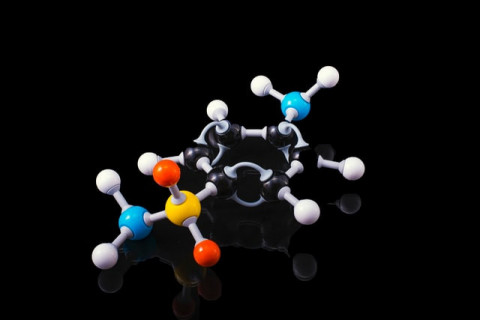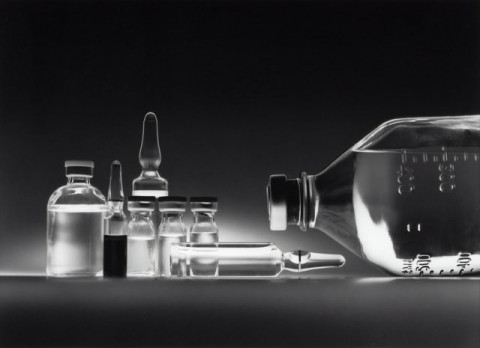
6 min
0
10.04.2022

Chemistry is how we, massive human beings, can examine the minute molecules and particles in substances and objects.
We interact with substances daily. We must first have a sense of how much substance there is before using it or predicting how it will act.
For example, the atomic structure of a sugar packet is C12H22O11. This means that the packet contains 12 carbon atoms, 22 hydrogen atoms, and 11 oxygen atoms. We have no idea how this chemical will react to the other particles, including our body, upon intake.
Stoichiometry is the act of predicting the amounts of substances participating in a chemical reaction. In Greek, it literally means “measuring elements.” It allows us to count atoms (i.e., Magnesium) by weighing them.
This guide will provide you a better understanding of moles and molar mass, which are concepts related to stoichiometry. It will also teach you how to determine the molar mass of elements and calculate the molar mass of copper compounds.
General Info on Copper Molar Mass
The name copper, or cuprum, is derived from the Old English name, “coper,” meaning a metal from Cyprus.
- Group: 11
- Block: d
- Period: 4
- Relative atomic mass: 63.546
- Key isotopes: 63Cu, 65Cu
What Is Molar Mass?
Molar mass is the mass of one mole of particles or molecules; it’s expressed using the unit g/mol. Mole, which may also be spelled as Mol, is a very large number within particles and molecules.
A single Mol of a substance equates to 6.02x1023 particles or molecules. This number is also known as Avogadro's number or NA. This is considered the constant proportionality of the number of constituent particles within a given sample, meaning its value does not change.
These constants are often specified by NIST (National Institute of Standards and Technology).
Let us use an example to visualize this better.
Example
Consider 1.00 mole of methane, CH4 inside a 1.00L container:
- There are 6.02x1023 molecules of CH4 in the system
- There are 4.00 moles of hydrogen (because of the subscript 4) and 1.00 mole of carbon in the system
- So, when we weigh one mole of CH4, that would be the molar mass of methane.
Molecular Weight and Molecular Mass
Molar mass has gained alternative names, but it never changed its definition. Some of the names include:
- Molecular Weight
- Molecular Mass
- Gram Formula Mass
Molar Mass vs. Atomic Mass
Is molar mass different from atomic mass? They are different concepts, but they both pertain to the same value. The difference is that the atomic mass is expressed in the unit amu, while molar mass has a unit of g/mol. Atomic number, on the other hand, is a different topic.
Formula to Calculate Molar Mass of Cu
Molar mass values can be found in some periodic table illustrations and other literature. It is relatively easy to find and is commonly written underneath the name of the element. Per atom, we have a designated molar mass.
Isotopes refer to atoms having an equal number of protons yet a different number of neutrons. Because of this, isotopes tend to have very similar properties. As for the molar mass of an electron, it has a molar mass of 0.000549 u.
Note that an element's atomic weight is considered the relative sum or average of all organically existing isotopes of that element. This is the number that appears in the table.
Steps to Determine the Mass of Copper
- Locate Copper atom (Cu) in the periodic table
- Look for the indicated number representing its molecular weight and amu
- Note it down. There you have it—the average atomic mass (amu) and molar mass (g/mol)of Cu.
These are the exact steps that you need to follow after obtaining the mass of copper.
Task Examples with Solutions: Computing for the Molecular Mass
We will present a series of sample activities with solutions for calculating the molecular mass of a chemical compound and hydrates. The general molecular formula for molar mass requires the sum of the molar mass of all elements involved.
1. NaCl (Sodium Chloride)
- Locate the elements (Na and Cl) in the table to see their respective amu (atomic mass units) and g/mol
- Note that Na has 22.99 amu, g/mol while Cl has 35.45 g/mol
- Proceed with the calculation
Molar Mass (NaCl) = 22.99 g/mol + 35.45 g/mol
= 58.44 g/mol
Apply the same formula weight.
2. K2SO4 (Potassium Sulfate)
For the formula weight, multiply each amu or g/mol with the given subscripts before adding
M (K2SO4) = 39.10 (2) + 32.07 + 16.00 (4)
= 175.27 g/mol
3. CuSO4 (Copper (II) Sulfate)
mol cu SO4 = 63.546 + 32.06 + 15.999 (4)
= 159.603 g/mol
4. C2H5OH (Ethanol)
M (Ethanol) = 12.01 (2) + 1.01 (5) + 16.00 + 1.01
= 46.08 g/mol
5. FeO (Iron (II) Oxide)
M (FeO) = 55.85 + 16.00
= 71.85 g/mol
6. CuCl2 (Copper (II) Chloride)
M (CuCl2) = 63.55 + 35.45 (2)
=134.45 g/mol
In the case of hydrates and/or sulfide: the center between the two compounds means that the latter surrounds the prior.
7. CuSo4 x 5H2O
M = 159.603 + 18.02 (5) = 249.72 g/mol
Summary
In this section, you have learned important information regarding molecular mass. You have also familiarized yourself with computing the molecular mass of substances, precisely copper compounds. Mastering stoichiometry can enable us to have a better grasp and establish better predictions of chemical reactions and chemical formulas.
Stoichiometric calculations determine the number of atoms and the number of moles. They also include the concepts of reagents and conductivity. Try to practice your skill in computing for molecular mass by reviewing the given exercises.
Feel that you need help to deal with Copper Molar Mass? Ask Studybay! Our experts provide online tutoring and writing services for students.
We help students with:
- chemistry homework
- assignments in different subjects



